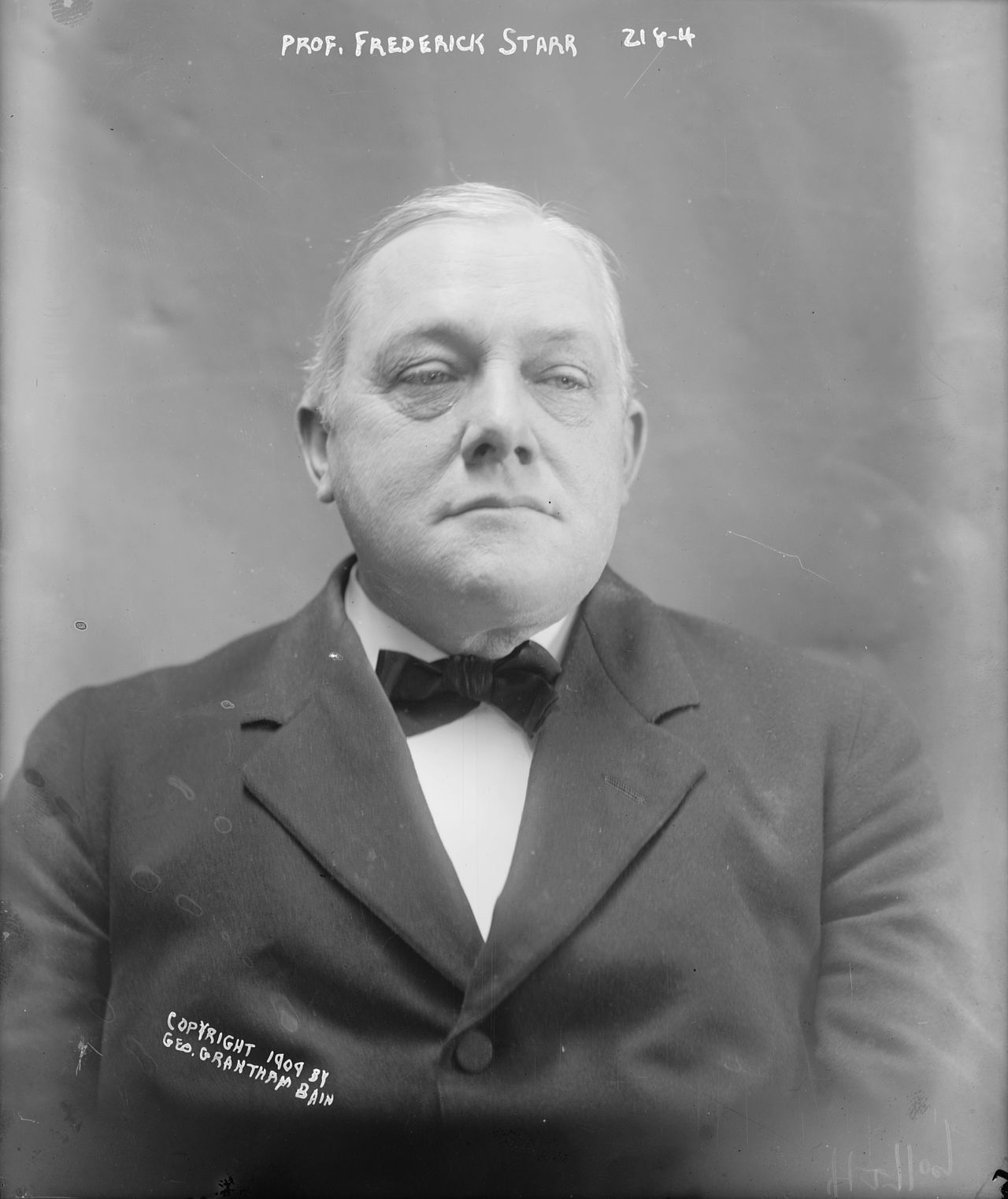 “Legends and Music of the Navajos” is an article written by Fredrick Starr and published in The Dial in 1897. Starr was an academic and anthropologist active during the late 19th century and early 20th century. As an academic from the late 19th century, Starr demonstrates the commonly held opinions and beliefs of the academic community surrounding Native American cultures. Throughout the article, Starr prides himself on his abandonment of antiquated views, such as the spelling of “Navaho,”1 which Starr cleverly corrects to the modern spelling, “Navajo.” For innovations such as these, as well as the suggestion that the Navajo people were an “advanced tribe,” Starr was likely seen as progressive for legitimizing the study of Indigenous Americans throughout the United States and Mexico. However, this “forward thinker” has become a prime example of the pervasiveness of dehumanizing and eurocentric ideas surrounding the study and treatment of Indigenous Americans in America in the 19th and 20th centuries.
“Legends and Music of the Navajos” is an article written by Fredrick Starr and published in The Dial in 1897. Starr was an academic and anthropologist active during the late 19th century and early 20th century. As an academic from the late 19th century, Starr demonstrates the commonly held opinions and beliefs of the academic community surrounding Native American cultures. Throughout the article, Starr prides himself on his abandonment of antiquated views, such as the spelling of “Navaho,”1 which Starr cleverly corrects to the modern spelling, “Navajo.” For innovations such as these, as well as the suggestion that the Navajo people were an “advanced tribe,” Starr was likely seen as progressive for legitimizing the study of Indigenous Americans throughout the United States and Mexico. However, this “forward thinker” has become a prime example of the pervasiveness of dehumanizing and eurocentric ideas surrounding the study and treatment of Indigenous Americans in America in the 19th and 20th centuries.
Starr claims that “The Navajo are the most advanced tribe in the Athapascan family of Indians.”2 This claim is based on the fact that the creation stories within Navajo culture align more closely with the Christian creation story of Adam and Eve, where man and woman are created out of the earth. Starr also cites the true historical nature of other aspects of the Navajo creation story as merits towards their “advanced” status among the tribes. Both a conformity to Christian beliefs and a historical non-fiction account of the past are eurocentric ideas that have been imposed as a standard for “advancement” by an almost exclusively white European academic class.
Starr’s true sentiments about Navajo culture are most apparent when talking about music towards the end of his article. Starr states that Navajo music is largely emblematic of all Indigenous American music, namely, it applies “… Those peculiarly favorite devices among savage and barbarous races…”.3
While Starr and Densmore are both examples of antiquated and exploitative anthropologists who dehumanized Indigenous Americans, this example from Starr paints Densmore’s work in a different light. When Densmore began her research, Indigenous American music was considered “savage” and “barbaric” and considered to have no value. Densmore’s work helped to legitimize the study and value of Indigenous music for white academics, despite her flawed methods and eurocentric claims as to why the music was valuable.
1 Starr, Frederick. 1897. “LEGENDS AND MUSIC OF THE NAVAJOS.” The Dial; a Semi – Monthly Journal of Literary Criticism, Discussion, and Information (1880-1929), Sep 16, 146. https://www.proquest.com/magazines/legends-music-navajos/docview/89650110/se-2.
